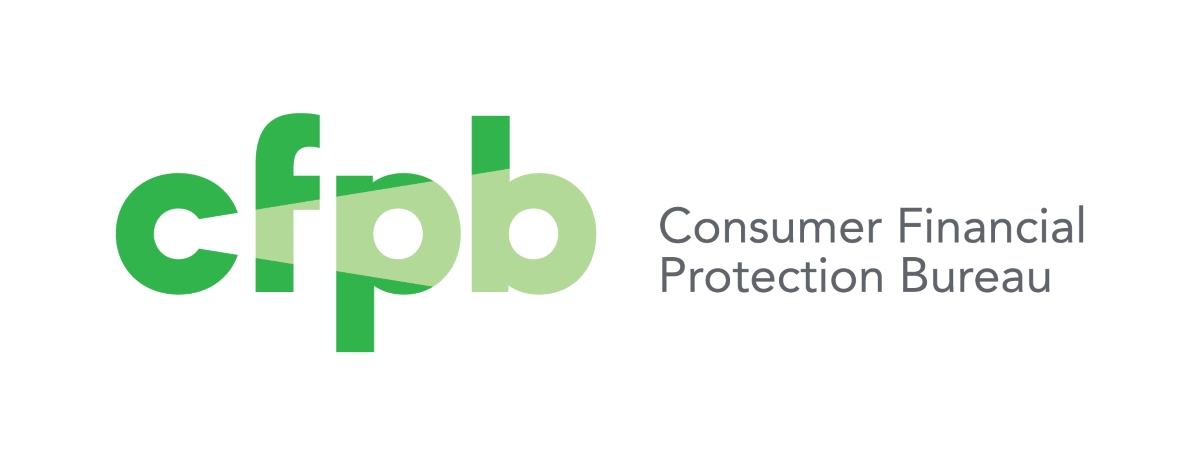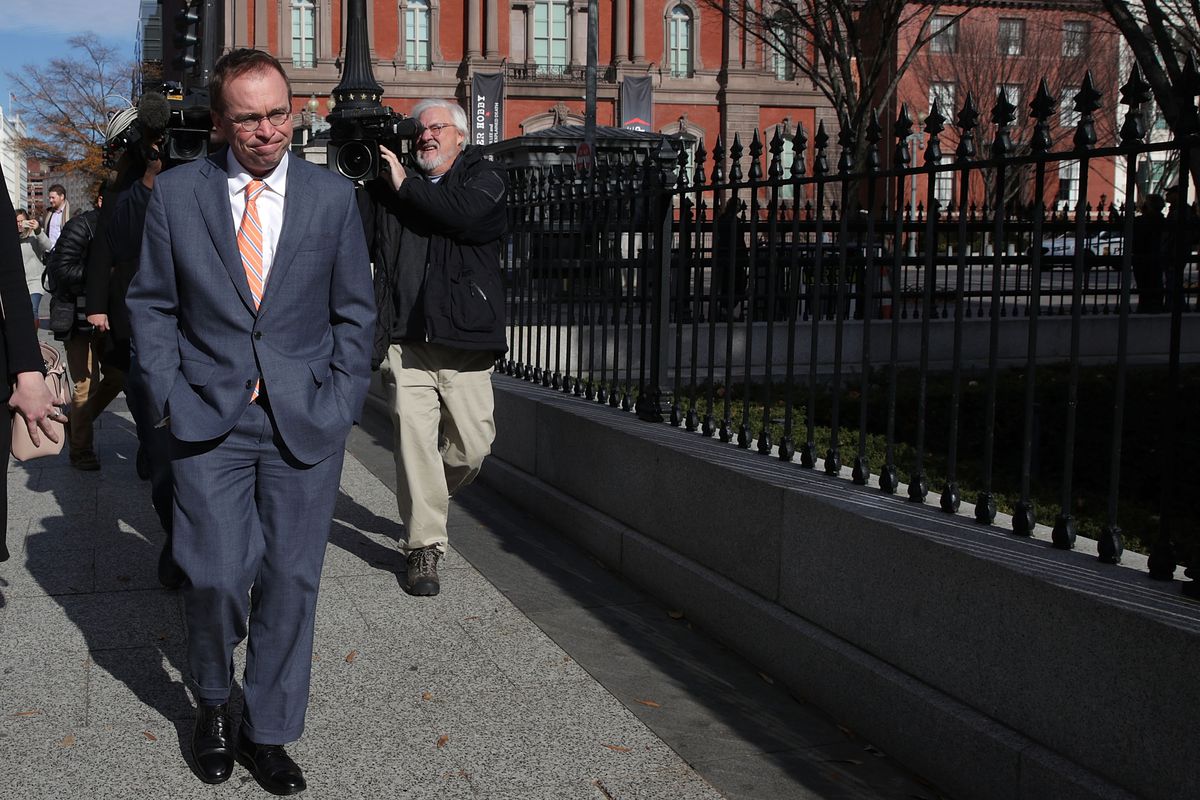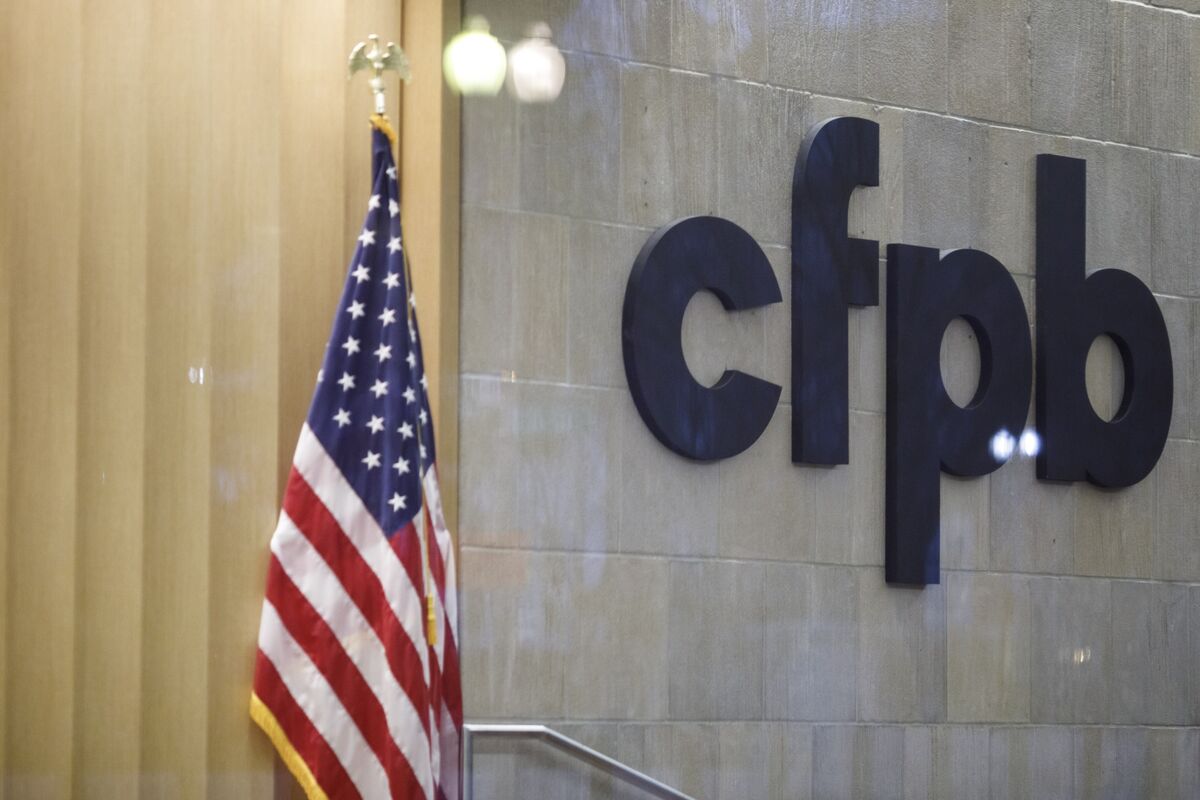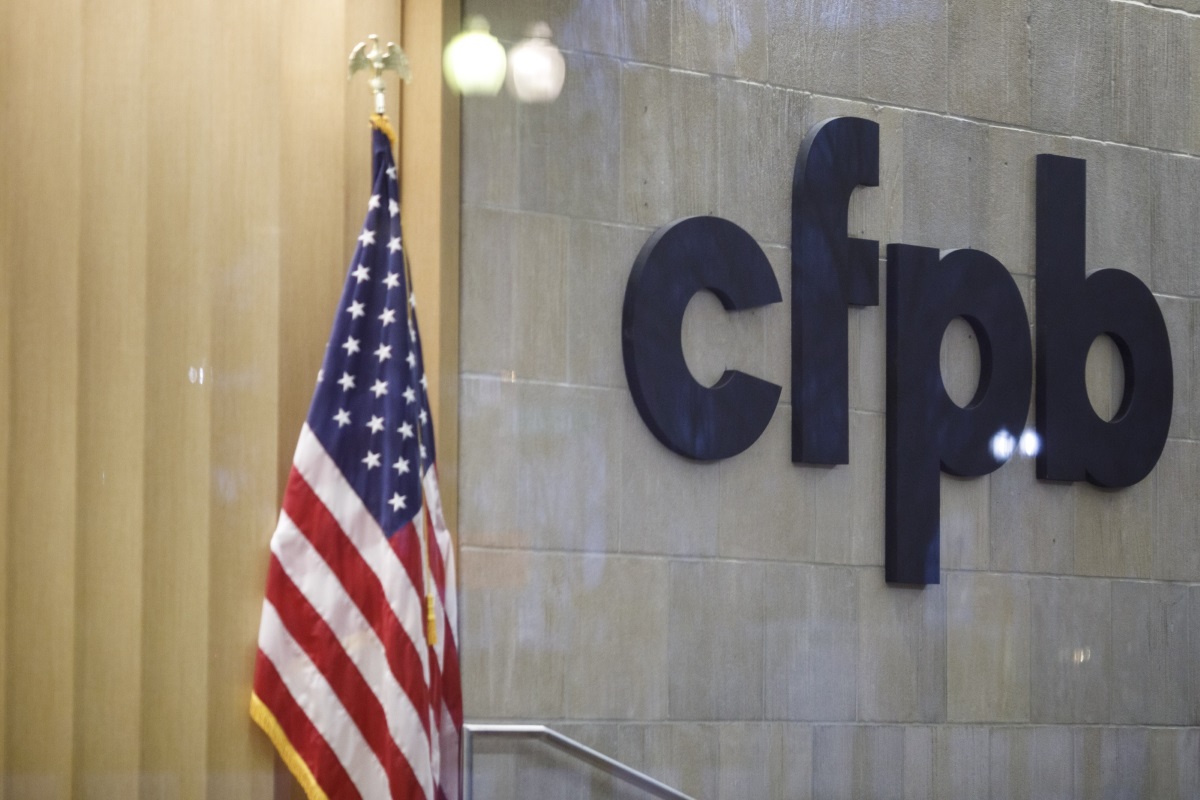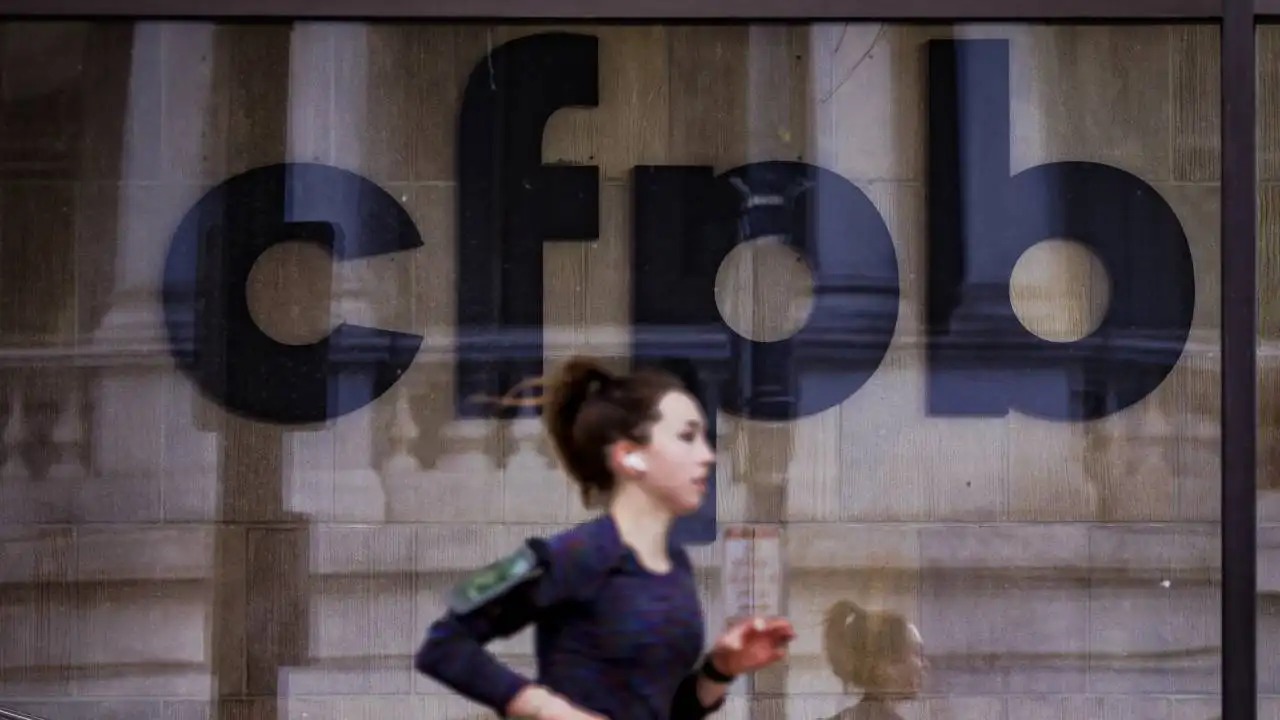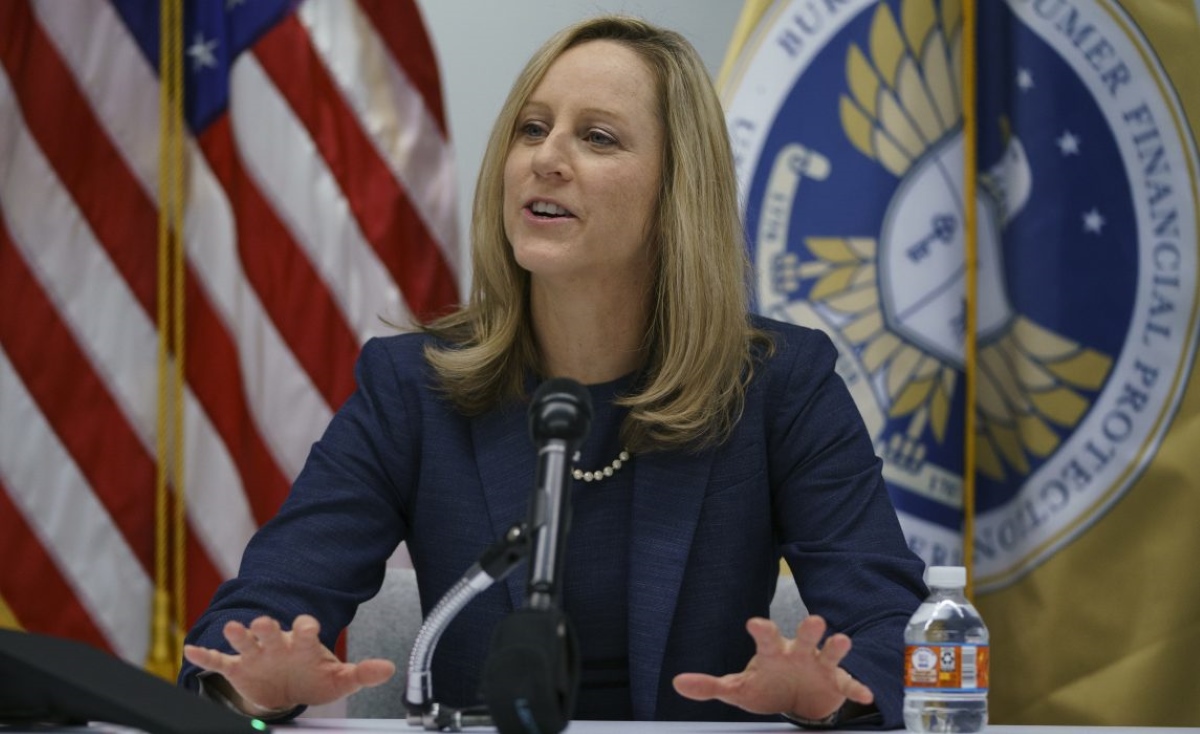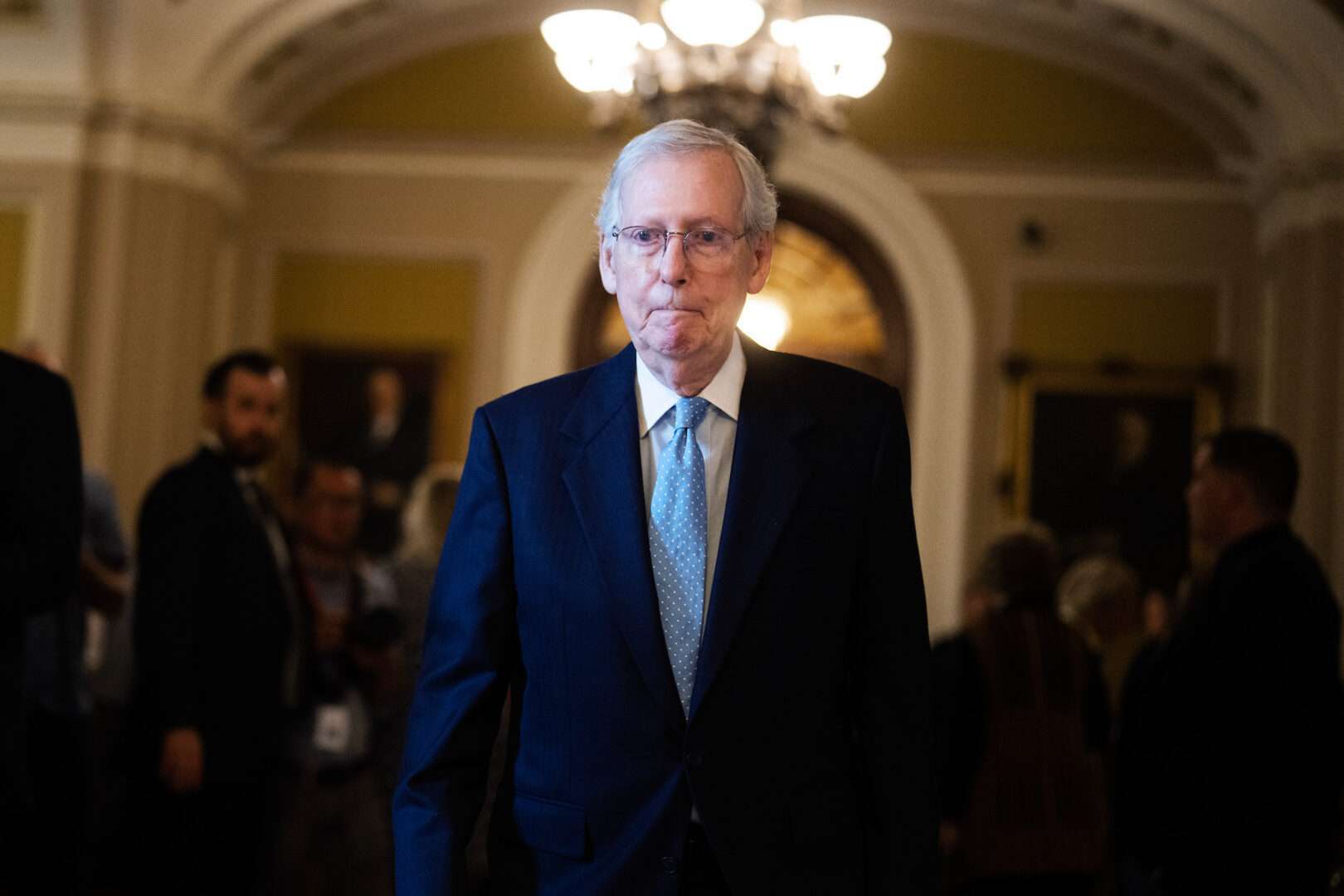Home>Finance>What Actions Did The Consumer Financial Protection Bureau Take With Wells Fargo Fines?
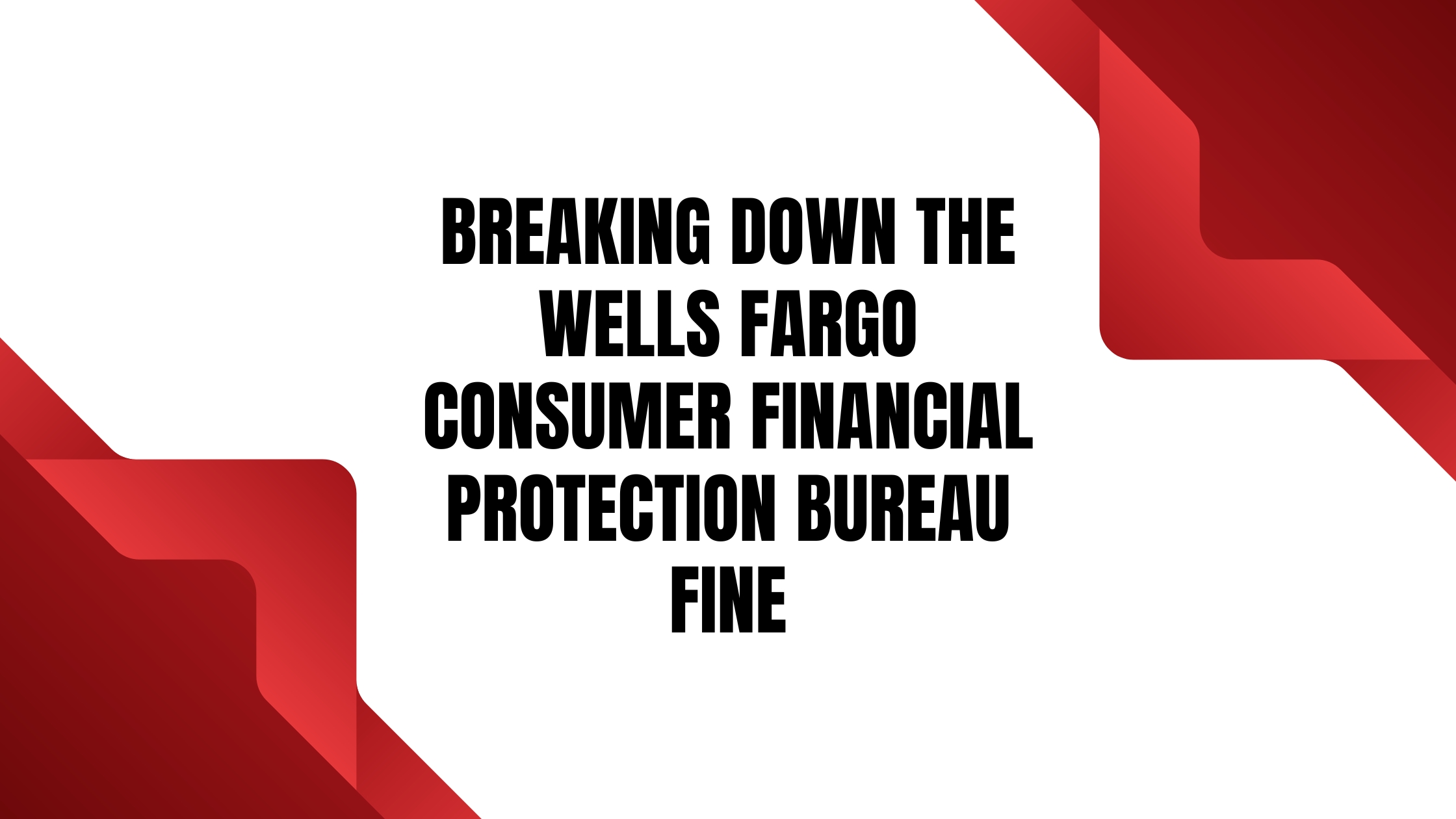

Finance
What Actions Did The Consumer Financial Protection Bureau Take With Wells Fargo Fines?
Modified: March 1, 2024
Discover what actions the Consumer Financial Protection Bureau took in response to the Wells Fargo fines, and learn how it affected the finance industry.
(Many of the links in this article redirect to a specific reviewed product. Your purchase of these products through affiliate links helps to generate commission for LiveWell, at no extra cost. Learn more)
Table of Contents
Introduction
The Consumer Financial Protection Bureau (CFPB) is a regulatory agency established in the United States to protect consumers’ interests in the financial sector. Since its creation in 2011, the CFPB has been at the forefront of enforcing consumer protection laws and ensuring that financial institutions adhere to fair practices.
One of the most prominent cases involving the CFPB was its investigation into the misconduct of Wells Fargo, one of the largest banks in the country. The scandal, which came to light in 2016, revealed that Wells Fargo had engaged in fraudulent practices, such as opening unauthorized accounts, charging unnecessary fees, and manipulating customer data.
The revelations sparked outrage among consumers and led to significant financial and reputational damage for Wells Fargo. In response to these egregious actions, the CFPB took swift and decisive steps to hold Wells Fargo accountable and restore consumer trust in the financial system.
Throughout the course of its investigation, the CFPB imposed substantial fines on Wells Fargo and implemented a range of measures aimed at compensating affected consumers and preventing future misconduct. In this article, we will delve into the actions taken by the CFPB in response to the Wells Fargo scandal and the impact they had on the wider financial industry.
Background on the Consumer Financial Protection Bureau (CFPB)
The Consumer Financial Protection Bureau (CFPB) was established as part of the Dodd-Frank Wall Street Reform and Consumer Protection Act in 2010. Its primary mission is to protect consumers in the financial marketplace by enforcing consumer protection laws, promoting transparency, and ensuring financial institutions treat consumers fairly.
The creation of the CFPB was driven by the need for a dedicated agency focused on safeguarding consumers’ interests. Prior to its establishment, consumer protection responsibilities were scattered across multiple agencies, leading to gaps in enforcement and a lack of coordinated efforts.
As an independent agency, the CFPB has the authority to regulate a wide range of financial products and services, including mortgages, credit cards, payday loans, student loans, and more. Its mandate covers not only traditional banks but also non-bank financial institutions, such as mortgage lenders, debt collectors, and credit reporting agencies.
The CFPB has a multi-faceted approach to fulfilling its mission. It conducts investigations, supervises financial institutions, enforces consumer protection laws, creates and enforces regulations, educates consumers about their rights, and collects and analyzes consumer complaints.
As part of its supervisory responsibilities, the CFPB conducts regular examinations of financial institutions to ensure compliance with consumer protection laws. These examinations assess various areas, such as risk management practices, compliance with lending regulations, and treatment of consumers.
Additionally, the CFPB actively engages with consumers by providing educational resources, including guides, toolkits, and financial literacy programs. It also maintains a consumer complaint database through which individuals can submit complaints and seek resolution for issues they have encountered with financial institutions.
The CFPB’s work has had a significant impact on the financial industry, leading to improved transparency and fairer treatment of consumers. Its enforcement actions have resulted in the return of billions of dollars to consumers in the form of restitution, cancelation of debts, and compensation for harm caused by financial institutions.
With its robust regulatory framework and commitment to consumer protection, the CFPB plays a crucial role in maintaining the integrity of the financial marketplace and empowering consumers to make informed decisions.
Overview of Wells Fargo’s misconduct
In 2016, Wells Fargo, one of the largest banks in the United States, found itself embroiled in a major scandal involving widespread misconduct. The revelations uncovered a series of unethical practices that had been taking place within the bank for several years.
The misconduct primarily centered around the creation of unauthorized accounts by Wells Fargo employees. In an effort to meet aggressive sales targets and earn incentives, employees opened bank and credit card accounts on behalf of customers without their knowledge or consent. This practice, known as “cross-selling,” artificially inflated Wells Fargo’s customer account numbers and revenue figures.
Employees resorted to various tactics to open these unauthorized accounts, including forging signatures, creating fake email addresses, and even transferring funds between existing accounts without customer knowledge. The fraudulent accounts often incurred fees that customers were unaware of until they received statements or noticed irregularities in their financial records.
The scope of the misconduct was staggering. It was reported that over 3.5 million unauthorized accounts were opened, affecting both individual and business customers. The unethical behavior extended beyond cross-selling, with additional allegations of unfair practices, such as applying mortgage-rate lock fees to customers, charging excessive auto insurance premiums, and manipulating customer data.
The impact of Wells Fargo’s misconduct was far-reaching. It not only betrayed the trust of millions of customers but also had significant financial repercussions for the bank. The scandal resulted in a tarnished reputation, a loss of customer trust, plummeting stock prices, and various legal and regulatory consequences.
The misconduct by Wells Fargo highlighted serious flaws in the bank’s corporate culture and internal controls. It shed light on the pressure employees faced to meet unrealistic sales targets, leading to unethical behaviors in order to achieve those goals. The lack of proper oversight and monitoring within the bank allowed these practices to persist for a prolonged period of time.
The revelations of Wells Fargo’s misconduct served as a wake-up call for the entire financial industry, prompting introspection and a reevaluation of sales practices and internal controls. It also marked a significant moment for the Consumer Financial Protection Bureau (CFPB) to take decisive action and hold Wells Fargo accountable for its wrongdoing.
Actions taken by the Consumer Financial Protection Bureau (CFPB)
The Consumer Financial Protection Bureau (CFPB) was swift in its response to the Wells Fargo scandal, taking a series of actions to hold the bank accountable for its misconduct and ensure consumer protection. These actions aimed to not only punish Wells Fargo for its wrongdoing but also prevent similar misconduct from occurring in the future.
The CFPB launched a comprehensive investigation into Wells Fargo’s practices, uncovering the widespread nature of the misconduct and the extent to which customers had been harmed. The investigation involved reviewing internal documents, interviewing employees, and analyzing customer complaints and account data.
Upon uncovering the full scope of the fraud, the CFPB took several significant actions:
- Imposition of fines: In 2016, the CFPB, along with other regulatory bodies, imposed fines totaling $185 million on Wells Fargo. This penalty was one of the largest fines ever levied on a financial institution and reflected the severity of the misconduct.
- Enforcement action: The CFPB brought an enforcement action against Wells Fargo, alleging violations of federal consumer protection laws. The action required the bank to take remedial measures, including reimbursing affected customers and implementing stronger internal controls and compliance protocols.
- Consumer restitution: The CFPB spearheaded efforts to provide restitution to affected customers. As part of this process, Wells Fargo was required to identify and compensate customers who had been charged fees for unauthorized accounts or who had suffered harm as a result of the bank’s unfair practices.
- Mandatory reforms: To ensure accountability and prevent future misconduct, the CFPB mandated that Wells Fargo implement significant reforms. This included making changes to its sales practices, strengthening internal controls, enhancing employee training and oversight, and establishing mechanisms to detect and address unethical behaviors.
- Cooperation with other agencies: The CFPB collaborated with other regulatory agencies, including the Office of the Comptroller of the Currency (OCC) and the Securities and Exchange Commission (SEC), to coordinate efforts and ensure a comprehensive response to the scandal. This coordinated approach helped facilitate a more effective resolution of the case.
The actions taken by the CFPB in response to the Wells Fargo scandal were aimed at achieving multiple objectives. They sought to redress the harm caused to consumers, hold Wells Fargo accountable for its misconduct, and set a precedent for other financial institutions regarding the consequences of engaging in fraudulent practices.
Furthermore, by imposing fines and implementing reforms, the CFPB aimed to restore trust and confidence in the financial industry by demonstrating that regulatory agencies are committed to upholding consumer rights and ensuring fair treatment by financial institutions.
Overall, the CFPB’s actions regarding the Wells Fargo scandal emphasized its role as a vigilant protector of consumer interests and a strong enforcer of financial regulations.
Imposition of fines on Wells Fargo
In response to the widespread misconduct uncovered at Wells Fargo, the Consumer Financial Protection Bureau (CFPB) and other regulatory bodies imposed significant fines on the bank. These fines served as both a punitive measure and a deterrent to prevent similar misconduct in the future.
The fines imposed on Wells Fargo were among the largest ever levied on a financial institution. In 2016, the CFPB alone fined the bank $100 million, marking it as the largest penalty in the agency’s history at that time. This amount was in addition to fines imposed by other regulatory bodies, including the Office of the Comptroller of the Currency (OCC) and the Securities and Exchange Commission (SEC).
The substantial fines reflect the severity of the misconduct and send a strong message that unethical practices will not be tolerated in the financial industry. They serve as a deterrent to other financial institutions, highlighting the potential consequences of engaging in fraudulent behavior.
The fines also serve to compensate affected consumers. In addition to the monetary penalty imposed on Wells Fargo, part of the funds collected from the fines were allocated to restitution efforts. These restitution efforts aimed to compensate customers who had been harmed by the unauthorized accounts, unnecessary fees, and other unfair practices.
While the fines imposed on Wells Fargo were substantial, it is important to note that they alone do not fully compensate for the harm caused to affected consumers. The CFPB also mandated additional measures to ensure that affected customers receive restitution.
Moreover, the imposition of fines on Wells Fargo was not the end of the story. The case prompted a thorough evaluation of the bank’s corporate culture, sales practices, and internal controls. The fines acted as a catalyst for restructuring and implementing necessary changes within Wells Fargo to prevent future misconduct.
It should be noted that fines alone may not be sufficient to deter unethical behavior and promote accountability. However, in conjunction with other enforcement measures and reforms, they can contribute to a more robust regulatory framework and a commitment to consumer protection.
The imposition of significant fines on Wells Fargo by the CFPB and other regulatory bodies demonstrates their determination to maintain the integrity of the financial industry and protect consumers from fraudulent practices. It serves as a reminder that financial institutions must prioritize the fair treatment of customers, and that non-compliance will have severe consequences.
Consumer restitution and compensation efforts
As part of the response to the Wells Fargo scandal, the Consumer Financial Protection Bureau (CFPB) played a crucial role in ensuring consumer restitution and compensation for those affected by the bank’s misconduct. These efforts aimed to provide relief to customers who had been harmed by the unauthorized accounts, excessive fees, and other unfair practices.
The CFPB worked in coordination with Wells Fargo to identify and compensate affected consumers. This process involved analyzing account data, reviewing customer complaints, and establishing a framework for restitution. The goal was to ensure that individuals who suffered financial harm received appropriate compensation for the harm they endured.
Under the guidance of the CFPB, Wells Fargo was required to implement a comprehensive restitution program. The program aimed to identify and provide restitution to customers who were charged fees for unauthorized accounts, as well as those who incurred financial harm due to the bank’s unfair practices.
Efforts were made to contact affected customers directly and inform them of the restitution process. Wells Fargo set up dedicated channels for individuals to submit claims and seek compensation for the harm they experienced. The bank allocated substantial funds to fulfill its obligation to compensate customers and make them whole.
In addition to direct restitution, the CFPB also ensured that Wells Fargo took steps to address the credit impact on affected consumers. The bank was required to undertake necessary measures to correct any negative consequences to the credit scores of individuals who were impacted by the unauthorized accounts or other unfair practices.
The restitution and compensation efforts did not end with the direct reimbursement of fees or financial harm suffered by customers. The CFPB, in collaboration with Wells Fargo, sought to address other intangible damages caused by the misconduct. This included efforts to restore customer trust and confidence in the financial system by implementing reforms and transparency measures.
While the consumer restitution and compensation efforts were a significant step towards addressing the harm caused by Wells Fargo’s misconduct, it is important to recognize that restoring consumer trust is an ongoing process. The CFPB continues to monitor Wells Fargo’s adherence to the mandated restitution program, ensuring that affected customers receive the compensation they deserve.
Moreover, the efforts undertaken by the CFPB and Wells Fargo in providing consumer restitution stand as a reminder that financial institutions must be held accountable for their actions, and consumers have the right to be compensated for any harm caused due to unfair and deceptive practices.
Overall, the consumer restitution and compensation efforts undertaken by the CFPB following the Wells Fargo scandal underline the importance of safeguarding consumer rights and working towards reestablishing trust between financial institutions and their customers.
Additional regulatory actions
In addition to imposing fines and ensuring consumer restitution and compensation, the Consumer Financial Protection Bureau (CFPB) took further regulatory actions in response to the Wells Fargo scandal. These actions aimed to strengthen oversight, prevent future misconduct, and promote accountability within the financial industry.
One of the key regulatory actions taken by the CFPB was the implementation of mandatory reforms within Wells Fargo. These reforms were aimed at addressing the root causes of the misconduct and preventing similar unethical practices from occurring in the future.
The CFPB required Wells Fargo to make significant changes to its sales practices, internal controls, and compliance protocols. This included revamping the bank’s incentive structure to discourage aggressive cross-selling practices and modify sales goals to prioritize customer service and satisfaction over sheer account numbers.
Wells Fargo was also required to strengthen its internal monitoring and risk management systems to detect and prevent fraudulent activities. This involved enhancing employee training and oversight mechanisms to ensure a strong culture of compliance and ethics at all levels of the organization.
Furthermore, the CFPB mandated increased transparency and disclosure by Wells Fargo. This involved providing clearer communication to customers regarding fees, account terms, and any changes to services. The aim was to empower consumers to make informed decisions and have a better understanding of their financial relationships with the bank.
The CFPB’s regulatory actions also extended beyond Wells Fargo. The scandal prompted a broader evaluation of sales practices and internal controls within the financial industry as a whole. The CFPB conducted examinations of other financial institutions, including both banks and non-bank entities, to ensure compliance with consumer protection laws and identify potential instances of similar misconduct.
Additionally, the CFPB sought to enhance consumer education and awareness regarding their rights and protections. It launched initiatives to educate consumers about financial products, provide resources for making informed financial decisions, and highlight the importance of reporting any unfair or deceptive practices that they may encounter.
The Wells Fargo scandal also prompted increased collaboration among regulatory agencies. The CFPB worked in conjunction with other entities, such as the Office of the Comptroller of the Currency (OCC) and the Securities and Exchange Commission (SEC), to coordinate efforts and share information regarding the investigation and enforcement actions.
Furthermore, the scandal served as a catalyst for legislative discussions and reforms. It sparked conversations about the need for stronger consumer protection laws, improved corporate accountability, and increased penalties for financial misconduct.
Through these additional regulatory actions, the CFPB demonstrated its commitment to preventing future misconduct, strengthening consumer protections, and fostering a more transparent and accountable financial industry.
Conclusion
The Consumer Financial Protection Bureau (CFPB) played a vital role in addressing the Wells Fargo scandal and holding the bank accountable for its misconduct. This case serves as a stark reminder of the importance of consumer protection and the need for regulatory oversight in the financial industry.
The actions taken by the CFPB, including the imposition of significant fines, restitution efforts, and implementation of regulatory reforms, showcased its commitment to safeguarding the rights and interests of consumers. By imposing penalties and implementing reforms, the CFPB demonstrated that fraudulent practices will not be tolerated, and financial institutions must be held accountable for their actions.
The Wells Fargo scandal sparked a broader reevaluation of sales practices and internal controls within the financial industry. It prompted increased transparency, strengthened risk management systems, and a renewed focus on customer service and satisfaction. The scandal also led to improved collaboration among regulatory agencies and motivated legislative discussions for stronger consumer protection laws.
While the actions taken by the CFPB and other regulatory bodies helped address the harm caused by Wells Fargo’s misconduct, it is essential to remain vigilant in upholding consumer rights and preventing future wrongdoing. Ongoing monitoring and enforcement efforts are critical to maintaining trust and ensuring a fair and transparent financial marketplace.
The Wells Fargo scandal serves as a significant lesson for both financial institutions and consumers. It underscores the importance of ethical business practices, robust internal controls, and a strong regulatory framework to protect consumers from unfair and deceptive practices.
As consumers, it is crucial to stay informed about our rights, ask questions, and report any suspicious activities to the appropriate regulatory authorities. By doing so, we can contribute to a more accountable financial industry and advocate for our own financial well-being.
The actions taken by the CFPB in response to the Wells Fargo scandal showcased the agency’s commitment to enforcing consumer protection laws, preventing misconduct, and ensuring fair treatment in the financial marketplace. Through its efforts, the CFPB continues to work towards a more transparent, ethical, and consumer-focused financial industry.
